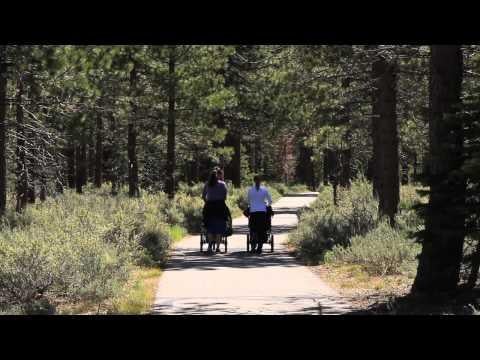Tahoe Metropolitan Planning Organization (TMPO)/Tahoe Regional Planning Agency (TRPA)
About TMPO/TRPA
The Lake Tahoe region includes three integrated regional transportation planning authorities. Tahoe Metropolitan Planning Organization (TMPO) serves as the federally-designated metropolitan planning organization for the Tahoe region.
Tahoe Regional Planning Agency (TRPA) carries out planning requirements of the Bi-State Tahoe Regional Planning Compact (Public Law 96-551) and serves as the regional transportation planning agency for the California portion of the Lake Tahoe basin.
The Tahoe Regional Planning Agency Board, with the addition of a representative from the United States Forest Service, serves as the TMPO board.
Members: Counties of El Dorado, Douglas, Placer and Washoe; Cities of Carson City, South Lake Tahoe
Transportation and SB 375
Regional Transportation Plan
The Tahoe Regional Transportation Plan: Mobility 2035 seeks to promote sustainability, while at the same time improving mobility for the region and creating walkable communities that offer residents transportation alternatives. Due to the various roles TRPA plays, the Tahoe Regional Transportation Plan serves several important functions. The plan:
- Is the regional transportation plan (RTP) under California state law
- Is the region’s long range transportation plan under Federal law
- Fulfills requirements of the Bi-State Compact for a regional transportation plan
- Will help achieve the Bi-State Compact’s environmental threshold requirements
- Contains the region’s Sustainable Communities Strategy (SCS) under SB 375
- Will help the region meet Lake Tahoe total maximum daily loads
The TRPA Governing Board and TMPO Governing Board approved and adopted the final Regional Transportation Plan on December 12, 2012.
Sustainable Communities Strategy
The Sustainable Communities Strategy (SCS) required under SB 375 is incorporated in Chapter 3 of the Tahoe Regional Transportation Plan: Mobility 2035. The SCS is an integrated land use and transportation strategy that will allow the Tahoe region to achieve targets for reducing greenhouse gas emissions by 2035 (12% reduction by 2020 and a 7% reduction by 2035).
Public Participation Plan
In accordance with federal and state requirements, during 2007 and 2008 TMPO worked with the public and stakeholders to develop a Public Participation Plan. The development of the plan helped TMPO identify the best ways for reaching out and connecting with the public, including using social media, posting flyers on transit and at bus stops, and meeting with stakeholder groups at their regularly scheduled meetings. First adopted in July 2008, the plan was further updated and re-released in 2010 to incorporate new requirements in California’s SB 375.
Housing
California jurisdictions must adopt housing element updates that demonstrate accommodation of an eight-year projection of housing need, called the Regional Housing Needs Assessment (RHNA).
For Lake Tahoe, the projection of housing need is set by the Sacramento Area Council of Governments (SACOG), in consultation with the TMPO. The RHNA requirements apply only to the portions of the Lake Tahoe region that are in California. SACOG approved the 2013-2021 RHNA for the California side of the Tahoe Basin in December 2011. TMPO subsequently incorporated its RHNA into Section 3.3 of the Sustainable Communities Strategy, which was adopted in December 2012.
Other Programs and Studies
Bicycling and Walking
Bicycling and walking are a major focus of the Tahoe Metropolitan Planning Organization, as biking and walking are a great way to enjoy Lake Tahoe. TMPO encourages bicycling and walking through a Bicycle and Pedestrian Plan, the Tahoe Bike Challenge, by supporting the completion of major bicycle trails in the region, and has developed a user-friendly Bicycle Trail Model to estimate usage on existing and proposed bike trails around Lake Tahoe.
Videos
| Mobility and Transportation in the Tahoe Basin: Mobility 2035 |
 |
|
Source:Tahoe MPO’s Website |





